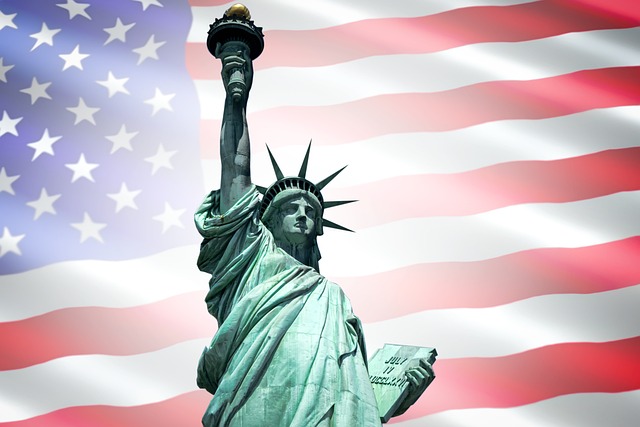The Tea Stained American Flag is a deeply symbolic representation of American heritage, transcending its role as mere decoration to serve as a narrative canvas that captures the historical journey of the United States. This flag, displayed nationwide, is imbued with a rich patina through tea staining, which honors the nation's past and evokes nostalgia for America's foundational principles. The aging process and subtle antiquing of the fabric enhance its visual depth and storytelling ability, reflecting generations of lived experiences and solidifying its status as an iconic symbol of American identity. The flag stands as a tangible connection to the legacy of the United States, offering a visual chronicle of time and the enduring American spirit. It is a distinctive element within America's cultural heritage, appreciated for its ability to authentically represent the nation's history and tradition. Tea staining on American flags dates back to the Civil War era and has evolved into a valued art form, sought after by collectors and historians for its significance in preserving the symbolism of the national emblem. These flags are more than symbols; they are tangible reminders that reflect America's history and ongoing narrative, grounding citizens in a shared legacy while chronicling the evolution of American society. The Tea Stained American Flag is a poignant artifact that underscores the profound significance of America's storied past and enduring spirit.
honor and tradition intertwine, a tea-stained American flag emerges as a powerful emblem of our nation’s rich tapestry. This article delves into the aged look that symbolizes American heritage, exploring the cultural significance behind the timeworn charm captured in tea staining. From the artistry that breathes life into this practice to the historical narratives etched within each stain, we uncover the layers of meaning and continuity this unique form of artistry represents. Join us as we navigate the deep-rooted American culture encapsulated by the tea-stained American flag, a testament to enduring legacy and shared history.
- The Timeless Charm of a Tea-Stained American Flag: A Symbol of History and Heritage
- Crafting Tradition: The Artistry Behind Tea Staining and Its Roots in American Culture
- A Closer Look at the Aged Appeal: How Tea Stains Reflect America's Past and Continuity
- Preserving Legacy Through Patina: The Role of Tea-Stained Flags in Celebrating American Heritage
The Timeless Charm of a Tea-Stained American Flag: A Symbol of History and Heritage

The Tea Stained American Flag is a poignant emblem that captures the essence of American heritage, imbued with a narrative of history and character. This timeworn motif, often found adorning homes and businesses across the nation, transcends mere decoration; it tells a story of the nation’s journey, marked by resilience and patriotism. The act of staining the flag with tea is not merely an aesthetic choice but a symbolic gesture that honors the past while evoking a sense of nostalgia and reverence for the values upon which the country was founded. This unique aging process lends the flag a character that speaks to the lived experiences of generations, marking it as a cherished icon of American identity.
The Tea Stained American Flag, with its subtle patina of age, serves as a tangible link to the legacy of the United States. It is a visual representation of the passage of time and the enduring spirit of the nation. Each stain, unique in hue and pattern, represents a thread woven into the larger tapestry of American history, reflecting moments of both struggle and triumph. This flag, aged yet vibrant, stands as a symbol that resonates with the collective memory of its people, inviting contemplation of one’s own heritage and the storied past that has shaped the present. It is a testament to the enduring legacy of American values and the continuous evolution of the nation’s identity.
Crafting Tradition: The Artistry Behind Tea Staining and Its Roots in American Culture

The tradition of tea staining on American flags is a practice steeped in history and artistry, reflecting a unique chapter in the nation’s cultural tapestry. This method of distressed finish imbues the stars and stripes with an aged look that often evokes feelings of nostalgia and reverence for American heritage. The technique involves carefully applying tea to fabric, allowing it to seep into the fibers and produce a soft, antiqued patina. This process not only lends visual depth but also tells a story of time and respect. It’s a craft that requires patience and precision, as each layer of tea must be controlled to achieve the desired effect without compromising the flag’s integrity or readability of its design.
The roots of tea staining on American flags can be traced back to the Civil War era, where it served as a means to conserve old flags that had seen better days. Soldiers and their families would stain the fading fabric with tea, enhancing the durability and visual appeal of the flag. This practice has since evolved into an art form, celebrated for its ability to convey American history and tradition in a tangible, authentic way. Today, tea staining is revered by collectors, historians, and artists alike for its role in preserving and honoring the legacy of American symbolism.
A Closer Look at the Aged Appeal: How Tea Stains Reflect America's Past and Continuity

The tea-stained American flag emerges as a poignant symbol within the rich tapestry of American heritage, offering a closer look at the aged appeal that resonates with the nation’s storied past. These flags, marked by the patina of history, speak to the countless community gatherings and national events they have witnessed. The stains, far from being mere blemishes, are imprints of civic life, bearing witness to moments when citizens came together over shared values and collective aspirations. Each tea stain carries with it a narrative of tradition and continuity, a testament to the enduring spirit of America. As the fabric ages, the stains settle into the fibers, becoming an integral part of the flag’s history, much like the experiences and memories that shape the nation itself. These flags, with their unique marks, serve as a tangible reminder of America’s heritage, grounding citizens in a shared legacy while reflecting the ongoing evolution of the country. The tea-stained American flag, therefore, stands not just as a symbol of past struggles and triumphs but also as a living chronicle of America’s ongoing story.
Preserving Legacy Through Patina: The Role of Tea-Stained Flags in Celebrating American Heritage

The aging process of objects, including flags, often imbues them with a narrative that reflects the passage of time and the historical events they have witnessed. A tea-stained American flag, in particular, is a potent symbol of America’s rich tapestry of history and tradition. These flags, marked by the oxidation of their fibers and the patina developed over years of exposure to elements, carry within them the stories of past struggles and triumphs, offering a tangible connection to our forebears. The patina on these flags is not merely a sign of aging but a testament to the enduring legacy they represent. It speaks of resilience, honor, and a shared heritage that binds generations. Collectors and history enthusiasts often prize such artifacts for their authenticity and the intimate role they played in historical moments, such as the Boston Tea Party, from which the term “tea-stained” originates. These flags are more than mere symbols; they are a tangible piece of American heritage that preserves the legacy of the country’s values and history for future generations to witness and honor. The care taken to preserve these tea-stained American flags underscores the importance of maintaining a physical connection to our nation’s past, ensuring that the spirit of American heritage remains alive in their continued display and reverence.
